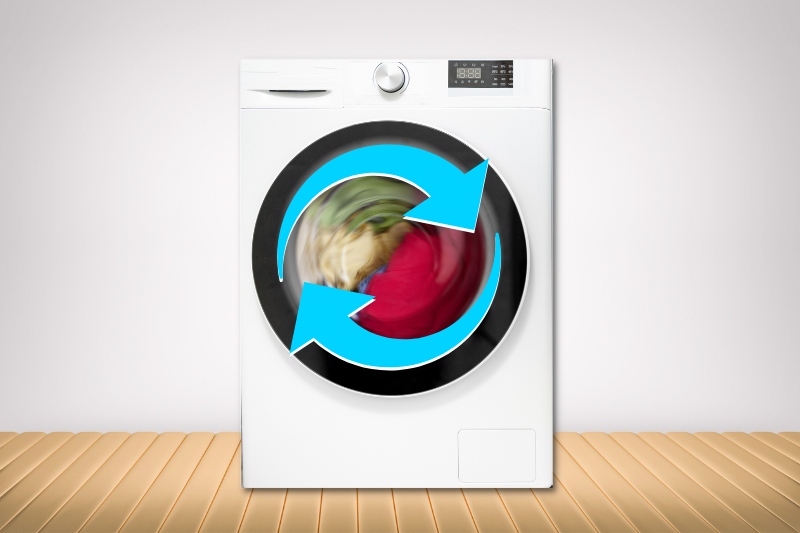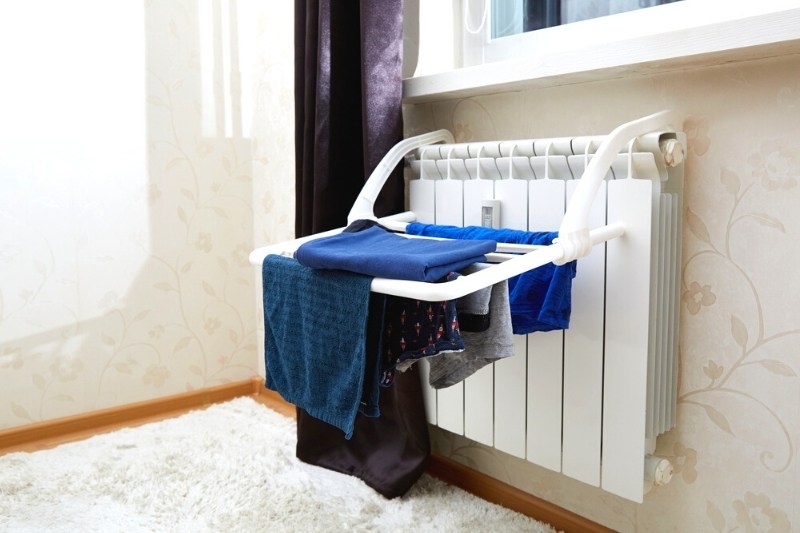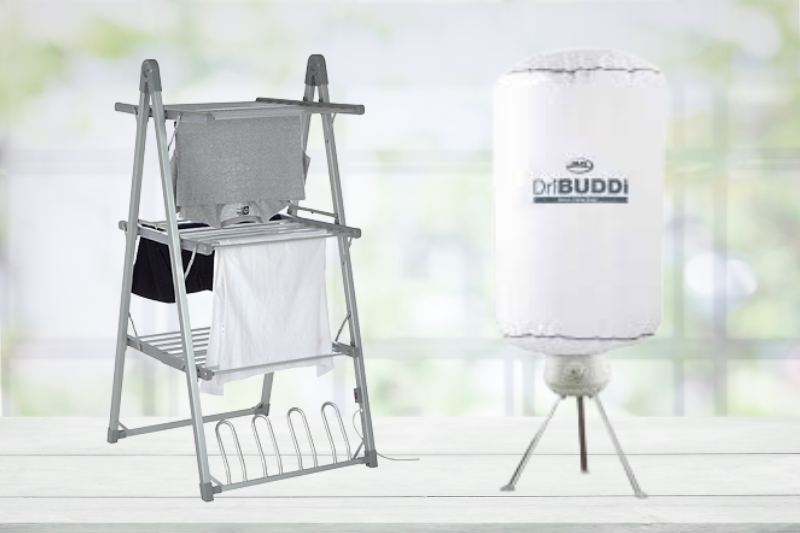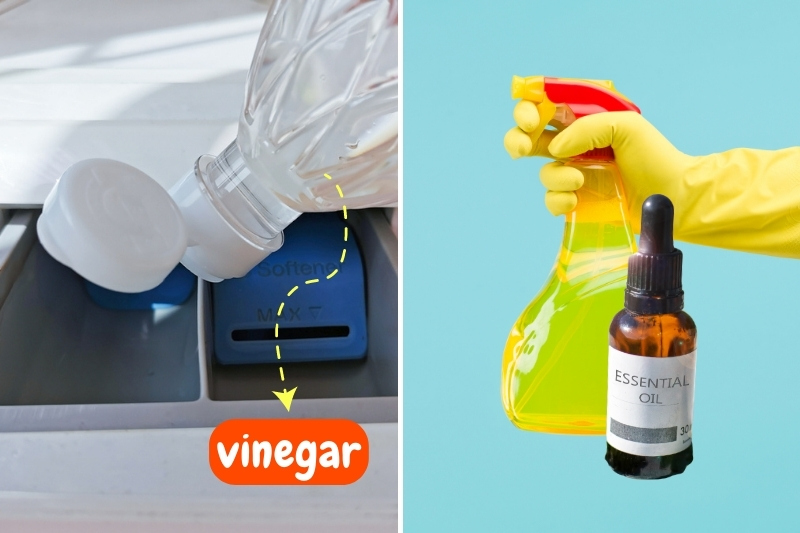Drying clothes indoors can be a bit of a challenge and if you don’t have the right setup, they may end up smelling damp and musty.
But given the unpredictable nature of Great British weather, you can’t always rely on an outdoor washing line. Plus, not everyone has the space or budget for a tumble dryer.
If this resonates with you and you’re looking for a solution, read on for our top tips on how to stop clothes smelling damp when drying indoors.
Why Does My Washing Smell Damp After Drying It Indoors?

There are a few reasons why your clothes might smell damp when drying them on an airer or indoor washing line. The most common causes are:
- Leaving wet clothes in the washing machine too long
- High humidity/ poor ventilation in your drying room
- Hanging wet clothes too close together
- Putting clothes away before they’re 100% dry
To keep your wardrobe smelling fresh, you’ll want to avoid all of these things and make sure your clothes dry as quickly as possible.
To speed up the process (without a tumble dryer), follow our simple suggestions below.
We’ve even included a bonus tip to help rid your clothes of any musty odours—ideal if they’ve already fallen victim to damp conditions.
How to Stop Clothes Smelling Damp When Drying Indoors
1. Remove any excess water

Before drying clothes indoors, you’ll want to remove as much moisture as you can.
To do this, select the highest spin cycle recommended for the garments you’re washing.
If they still feel wet, run an extra spin cycle to take some more water out of the fabric.
This is particularly useful for heavyweight items like jeans, towels and bed sheets that can take a while to dry.
For more delicate items, you can remove excess moisture out by hand using a towel.
Simply lay your garment out on a clean, dry towel, then roll it up, gently pressing as you go. This will transfer the water onto the towel, which you can then spin on a more vigorous cycle.
2. Hang clothes quickly and strategically

Another key step in preventing clothes from smelling damp when drying indoors is to hang them up straight away.
The longer you leave wet items in the machine, the higher the risk of mildew building up and creating a musty smell – especially if your washer is due a clean.
You should also be strategic about how you hang the clothes. For better airflow, hang smaller items at the bottom of the airer and larger garments at the top. And don’t cram too many things on at once.
Instead, make sure you leave a decent gap between each row of clothes so the air can circulate freely.
3. Reduce the humidity in the air

As clothes dry, the water from the fabric evaporates into the air. As a result, the lower the humidity, the faster the drying process, as the air isn’t already saturated with moisture.
The ideal humidity for drying clothes is around 40% RH. This can be achieved with a relatively inexpensive dehumidifier that will suck up excess moisture and expel dry air.
Some even come with built-in laundry drying settings for ease. For best results, hang your washing in a small spare room with the door closed and leave the dehumidifier running for at least 3 hours.
Dehumidifiers are much cheaper to run than dryers. They also prevent a build-up of mould and keep walls from getting damp at the same time. Alternatively, make sure you crack a window in your drying room to let the moisture escape.
4. Utilise your heating and airing cupboard

Since clothes dry faster in warm environments, one of the simplest ways to stop clothes smelling damp when drying indoors is to use your heating.
While this arguably costs just as much as running a tumble dryer, if your heating is on anyway (in winter), it’s a great way to make the most of the energy you’re using.
However, don’t be tempted to hang items directly on radiators, as this can block the flow of heat around the room and even damage the fabric’s fibres.
Instead, buy several smaller airers designed to hook over them, so garments are close to the heat but not in direct contact with it. As an example, check out Brabantia Radiator Airer, which is foldable and offers 4.5 metres of drying space.
Or you can simply position your airer near the radiator. If you’re drying items in a spare room, you can even place a clean bed sheet over the top to focus the heat onto your clothes.
You can also put items in the airing cupboard for a few hours after taking them off the airer. The warmth from the water heater will ensure they are fully dry before you put them away.
5. Invest in a heated airer

Looking for a quick-dry solution that isn’t reliant on your heating being on? Then a heated airer could be ideal.
Models with fitted covers are best, as they trap the warm air from the heated rails in and will generally dry your clothes overnight. They can also help to warm up the room they’re in – particularly smaller spaces – perfect if you work from home!
6. Bonus tip: Freshen clothes with natural deodorisers

Finally, if your clothes have already fallen victim to that damp smell, don’t panic. Just rewash them on a warm setting and add a cup of white vinegar to the rinse cycle.
Instead of masking the smell with artificial fragrances, this natural deodoriser will remove any mouldy residue and cancel out bad smells. It also softens fabrics, so there’s no need for fabric conditioner too.
And, if you want to ward off future musty odours and keep your clothes smelling great for longer, why not try a refreshing mist?
Mix a few drops of your favourite essential oil with some water, then spritz it over your garments using a spray bottle when they’re around halfway dry.
And that’s how to stop clothes smelling damp when drying indoors! If you’re after more clothing care tips, check out our blog’s dedicated laundry section for advice and inspiration.

A proud Yorkshire lass with a love for movies, music and cosy nights in! Once a self-confessed avoider of cleaning, she’s always on the lookout for new ways to make household chores as quick and simple as possible.






